There are many reasons why a car can run hot, but not actually overheat. It’s a very common problem and is usually a sign that something is not right with the engine cooling system. So why does a car engine sometimes get too hot?
As a general rule, you can say your car is running hot but not overheating because of a problem with the cooling system. Cooling system problems include a failing water pump, low coolant level, old coolant that is no longer effective, a faulty engine coolant thermostat or a faulty auxiliary fan.
It can sometimes be difficult to see that the engine is in fact running hot, as many vehicles are no longer fitted with a temperature gauge. Instead you may just get a warning light on the dashboard telling you that there is something wrong. This can sometimes be too late and the damage to the engine may already be done.
It’s important to check the cooling system regularly for leaks or low coolant to prevent total failure.
7 Reasons Why Your Car Is Running Hot (But Not Overheating)
If you have noticed that your car is running hot regularly, but not actually overheating, then you’ll need to take a look at the cooling system. Here are some of the more common reasons for cooling system failure.
- Failing water pump
- Low coolant level
- Old coolant
- Faulty engine thermostat
- A faulty coolant fan
- A bad coolant temperature sensor
- A failing oil temperature sensor
Reason 1 – A Failing Water Pump
Car water pumps can slowly fail over a long period of time if left unchecked. They generally start to show symptoms of failure long before they actually give up completely. If the water pump is not operating as efficiently as it should then this can cause the engine to run hot.
Most water pumps are hidden away behind hoses and belts, so it can be difficult to assess the condition of the pump, without actually removing it from the engine. Luckily, there are a few common symptoms of a failing water pump that you can watch out for.
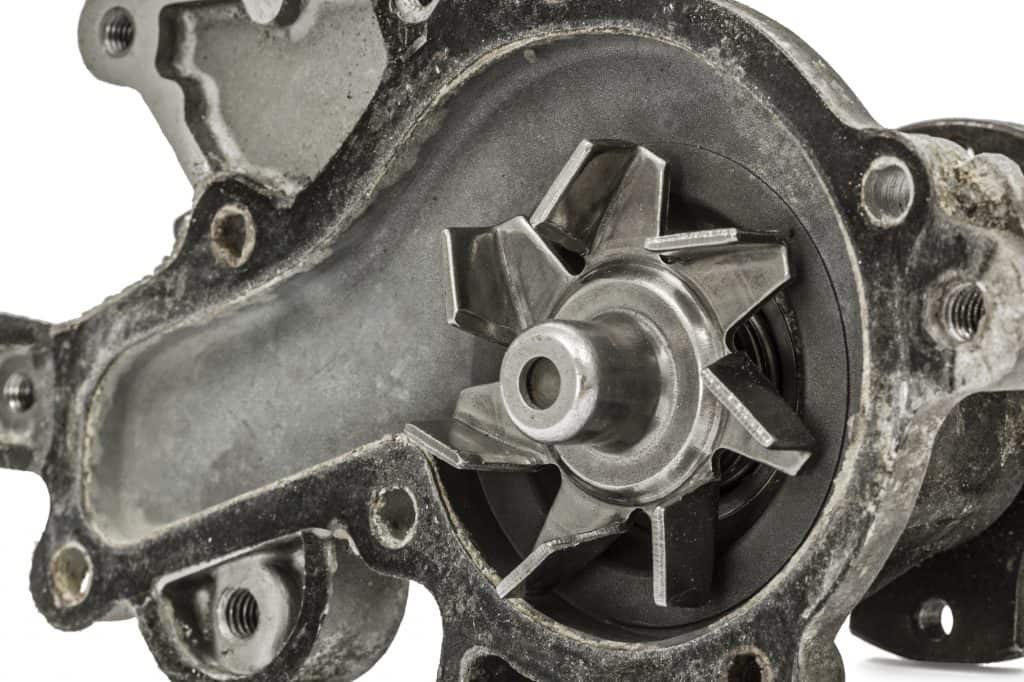
The signs of a failing water pump include: coolant leaking from the water pump seal or from the weep hole, noises from the water pump, a loose or noisy water pump pulley and dried coolant (white chalky residue) around the water pump and on nearby engine components.
If the timing belt of auxiliary belts are due to be changed, it’s a good idea to check the condition of the water pump too. Many water pumps last the lifetime of the car, but sometimes it’s best practice to replace the water pump as precaution or if the engine is overheating regularly.
Reason 2 – Low coolant Level
The water pump is vital for pumping coolant around the engine, but it is the coolant that actually takes the heat from the engine and keeps the engine temperature within a constant range. If there isn’t enough coolant in the engine then the engine is going to run hot and possibly overheat.
Engine coolant is actually a mixture of water and antifreeze. The antifreeze is a special chemical that enhances the thermogenic properties of the water by increasing the boiling point and preventing it from freezing in cold weather. It also includes rust inhibitors that protect the inside of the engine block.
Depending on the size of the engine, your car will need a certain volume of coolant to ensure that the cooling system operates efficiently. If there isn’t enough coolant in the system, or if the antifreeze water mixture is too weak, then the coolant will not be able to absorb enough heat as it passes through the engine.
Reason 3 – Old coolant
One of the most common reasons why a car runs hot is old coolant. Most vehicle manufacturers recommend that and engine coolant change is carried out every 2 years. This is because, over time, engine coolant looses its ability to effectively absorb heat energy and to maintain the engine temperature.
Old coolant also looses its ability to keep the internal parts of the engine from rusting. This is because coolant additives such as rust inhibitors stop working after a period of time and this can lead to the build up of gunk and debris in the coolant passages ad hoses of the engine. A buildup of unwanted material in the coolant system can inhibit the flow of coolant around the engine, causing it to run hot.
Engine coolant also contain additives that enhance the thermogenic properties of the coolant. These can also degrade over time, and make the coolant less able to absorb heat from the engine.
4. faulty engine coolant thermostat
One of the key components of the engine coolant system is the engine coolant thermostat. Most engines in fact have more than one coolant thermostat that operate in tandem to keep the engine temperature in check.
The engine coolant thermostat acts like a gateway in the coolant system, and controls the flow of the coolant liquid when it gets too hot. When the engine is cold the thermostat should be closed, so as to keep the coolant liquid flowing around the engine. Once the engine starts to heat up, the thermostat should open to allow the coolant to flow into the radiator so that it can be cooled before returning to the engine.
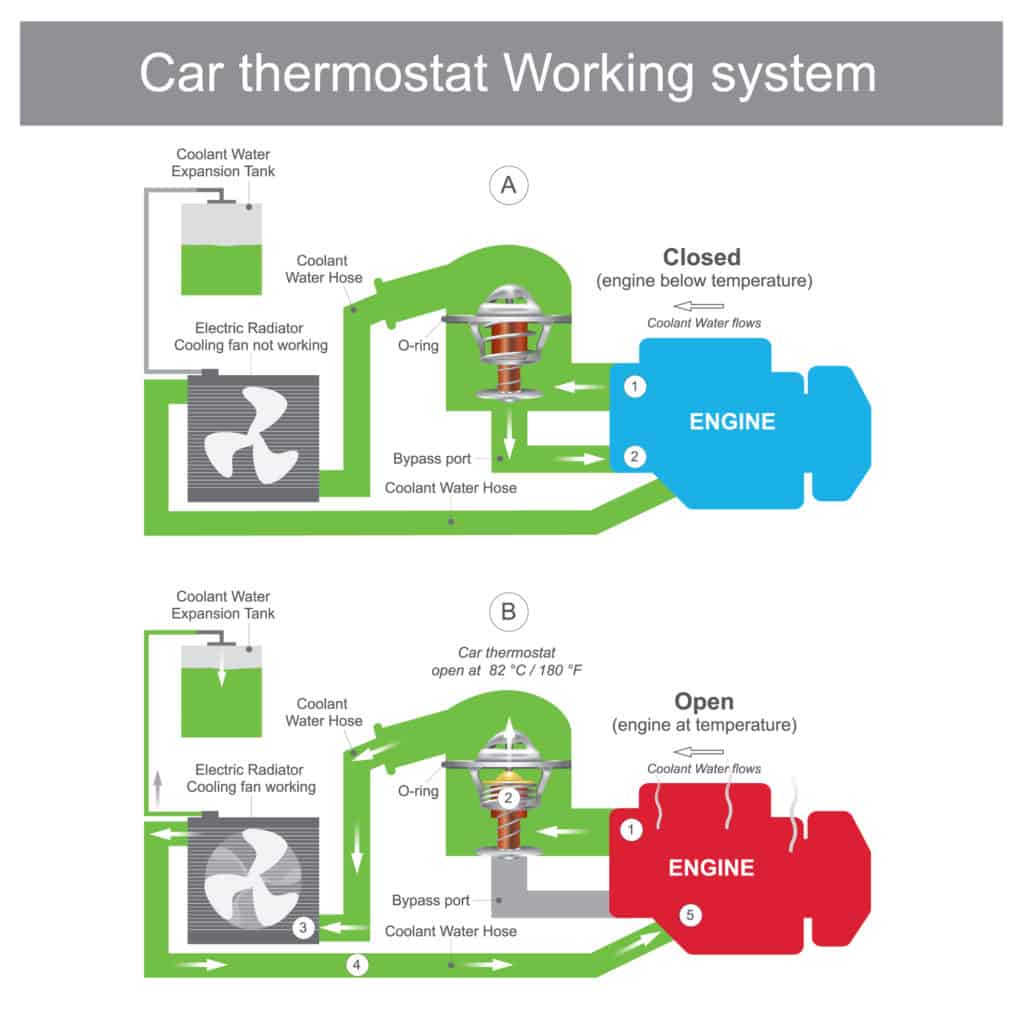
Engine thermostats can become less sensitive to temperature over time and this affects their performance. If they are no longer accurately measuring the temperature of the engine, they can start to open too early or too late. This will affect the overall temperature of the engine, as the coolant flow to the radiator is not controlled properly. This can cause the engine to run hot, but not necessarily overheat.
It can be difficult to assess the performance of a thermostat without using a diagnostic reader that can track the engine temperature in real time. Fortunately engine thermostats are designed to fail open. This means that if the thermostat fails completely then it will just remain open, and won’t ever block the coolant from getting to the radiator.
Reason 5 – A faulty cooling fan
Another important part of the engine cooling system is the electric cooling fan (or auxiliary fan). If you notice that your car is running hot during hot weather while driving slowly in traffic, then it could be a sign of a faulty cooling fan.
The cooling fan usually starts running when you are driving in stop start traffic and the engine temperature is rising. The ECU keeps track of the engine temperature via the engine temperature sensor. If it detects that the engine is running hot then it will activate the cooling fan.
The cooling fan works by increasing the amount of cool air that flows through the radiator when the car isn’t moving fast or is stationary. This ensures that the radiator stays cold enough to effectively dissipate the heat from the hot coolant, even when the car isn’t moving.
It’s very common for electric cooling fans to fail, especially on older cars. They can fail for a number of reasons such as a blown fuse, a bad relay or a bad motor.
Reason 6 – A bad coolant temperature sensor
A failing coolant temperature sensor can also incorrectly tell you that your car is running hot. Most cars have more than one engine temperature sensor, with the coolant temperature sensor being just one that is fitted to the engine to monitor the temperature of the coolant.
The main role of the coolant temperature sensor is to accurately report the real time temperature of the engine so that the ECU can alter the fuel to air ratio. This is necessary as colder engines need more fuel to run properly, and the amount of fuel needed needs to be altered as the temperature if the engine increases.
If the coolant temperature sensor is faulty, your engine is likely to run rich resulting in a drop in fuel economy and problems such as black smoke from the exhaust and a rough engine idle.
Some vehicles also rely on the coolant temperature sensor to activate the auxiliary cooling fan. If the sensor is faulty this can result in the cooling fan not working as it should and this can cause the engine to run hot.
Reason 7 – A failing oil temperature sensor
The engine oil temperature sensor is another sensor that the ECU uses to determine the temperature of the engine. Engine oil not only lubricates the inside of the engine components, it also helps to regulate the temperature of the engine.
Heat is removed from the engine oil via the engine oil cooler. Hot oil flows through the cooler as it is pumped around the engine. The cooler itself is cooled using engine coolant that is pumped around the outside of the cooler.
If the oil temperature sensor is failing then it may be giving false readings to the ECU. The engine oil temperature should be around the same as the coolant temperature once the engine warms up. If the coolant temperature sensor is giving readings that are vastly different to the engine oil temperature sensor, then this may affect how the ECU calculates the engine temperature.
In most cases, a faulty oil temperature sensor will not actually cause the engine to run hot, but it may trigger cause the engine temperature gauge to rise or an engine over heating warning to appear on the dashboard. In some older vehicles it may affect the cooling fan operation if there isn’t a separate sensor fitted to the fan itself.
What Next – How Do You diagnose engine hot but not overheating problems?
To accurately diagnose engine temperature problems you need an OBD-II diagnostic reader. This will allow you to check for electrical faults such as bad sensors. Most diagnostic trouble code readers will also allow you to monitor the engine temperature in real time.
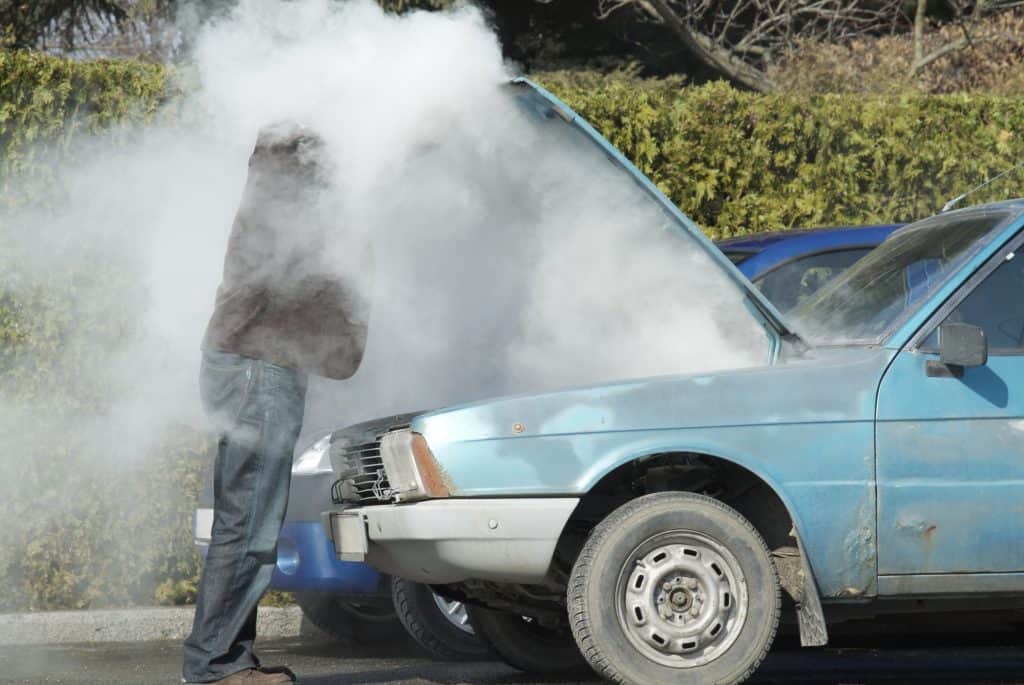
They do this by taking readings from the various temperature sensors located on the engine, thus allowing you to compare the temperature values in real time. Here are a few other simple checks and procedures that you can carry out:
- Check for coolant leaks. Coolant leaks can cause low coolant that will result in the engine running hot.
- Check the radiator for leaks or damage. Check that the radiator is not leaking coolant and that there is no damage to the radiator fins that may impede the flow of coolant. It’s a good idea to perform a radiator flush to remove any buildup of dirt inside.
- Check the condition of the auxiliary cooling fan. Check the condition of the cooling fan for damage to the blades. Ensure that it rotates freely (using a screwdriver or stick, don’t use your hand ever). Most fans are made from plastic, and they can easily become broken or loose some of their blades over time.
- Check the condition of cooling system hoses. Check all of the rubber cooling system hoses for splits or tears that may allow coolant to escape. You should also check the hose joints as these can often leak of the hoses have become hard or have shrunk.
- Perform a full coolant system flush and coolant renewal. This will remove debris from the system and help to remove any partial blockages. It will also allow you to add new coolant that will be more effective at maintaining engine temperature.
Related Questions
Q1. Why is my car running hotter than normal?
If your car is running hotter than it normally does, then it’s probably caused by a problem with the coolant system. The most common reasons why a car runs hotter than usual are low coolant levels, a faulty engine thermostat, and a faulty or leaking water pump.
Thermostats tend to lose their ability to measure temperature accurately over time, and whilst they may still work, they won’t be able to regulate coolant flow as accurately as when they are new. If there isn’t enough coolant in the engine, or if the water pump is not pumping it around as well as it should, then the engine will run hotter than usual.
Low engine oil levels and blockages in the coolant system can also cause an engine to run hot. If your car is running hot start by checking the coolant level (when the engine is cold!). If it is low, you can top it up with a small amount of water temporarily, until you find the source of the coolant leak.
Q2. Can I drive my car if it is running hot?
You shouldn’t drive your car if it is running hot or has overheated. If your car has a temperature gauge then it is running hot when the needle is in the red part of the gauge. Most cars don’t have temperature gauges but you will get a warning light on the dashboard if the engine is running hot.
The reason you should not drive your car when it is running hot is because it can cause serious and irreversible damage to the engine block. At very high temperatures the engine block can warp causing the head gasket to fail. This will lead to engine coolant mixing with engine oil and engine failure. High engine temperatures can also damage engine electronics, causing them to fail prematurely.
Q3. Engine hot but temperature gauge normal
If there is steam coming from your car when the engine is running but the temperature gauge is in the normal range, you may have a coolant leaking from a hose or the radiator. If you are sure that the temperature gauge is working and if there are no warning lights on, then it’s unlikely that your engine is actually overheating.
If the engine is not actually overheating but appears to be, it’s because coolant is escaping from the engine as steam. The coolant could be escaping from a few different places such as a split coolant hose, a hose joint, the radiator, or the radiator cap. If you are losing coolant, you shouldn’t drive too far before getting it fixed because the engine will really overheat if the coolant gets too low.
Q4. My temperature gauge is high but car not overheating
A high temperature gauge can be caused by a problem with the engine coolant sensor. If the coolant sensor is not working properly then the ECU will not be able to accurately keep track of the engine temperature. A faulty coolant sensor can also report false readings that are too high to the ECU and this will cause the temperature gauge to be higher than it should. You may also see a check engine light or engine temperature warning on the dashboard too.
Sometimes, if the temperature gauge is high but your car doesn’t actually overheat it can be an early sign of something failing in the engine cooling system. A failing engine thermostat, a bad water pump, or a slow coolant leak can cause your engine to run hot.






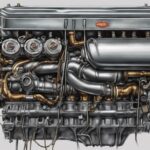
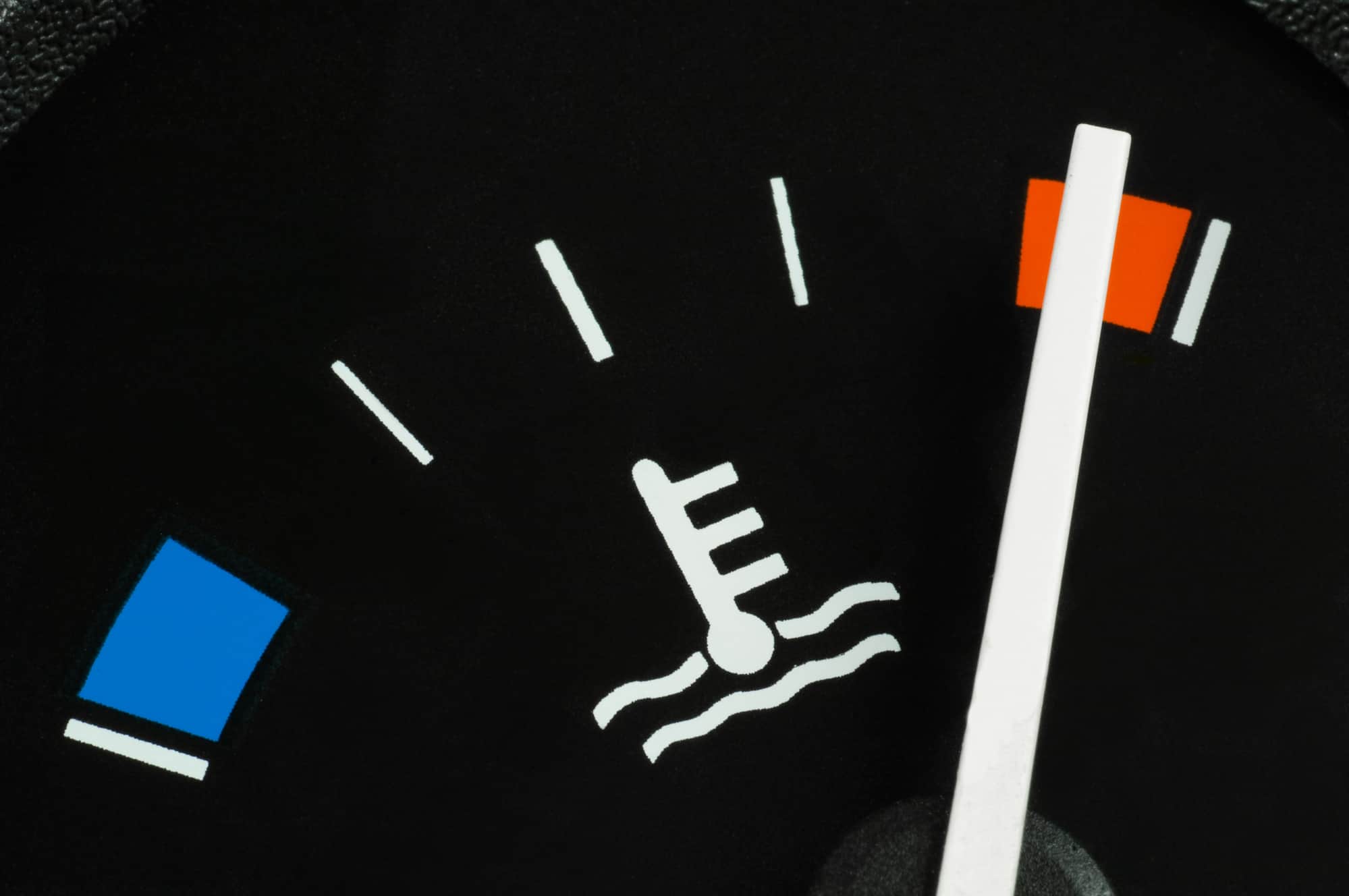
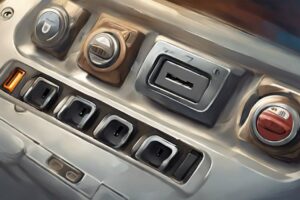


I’ve been noticing my car running hotter than usual, especially in traffic or during hot days, but it hasn’t been overheating to the point of concern. Could this be an early sign of a failing component in my cooling system? What steps can I take to diagnose this issue before it potentially leads to overheating?
I’ve been noticing my car runs a bit hotter than usual, especially during stop-and-go traffic, but it hasn’t reached the point of overheating yet. How can I initially diagnose the issue myself before considering to take it to a mechanic?